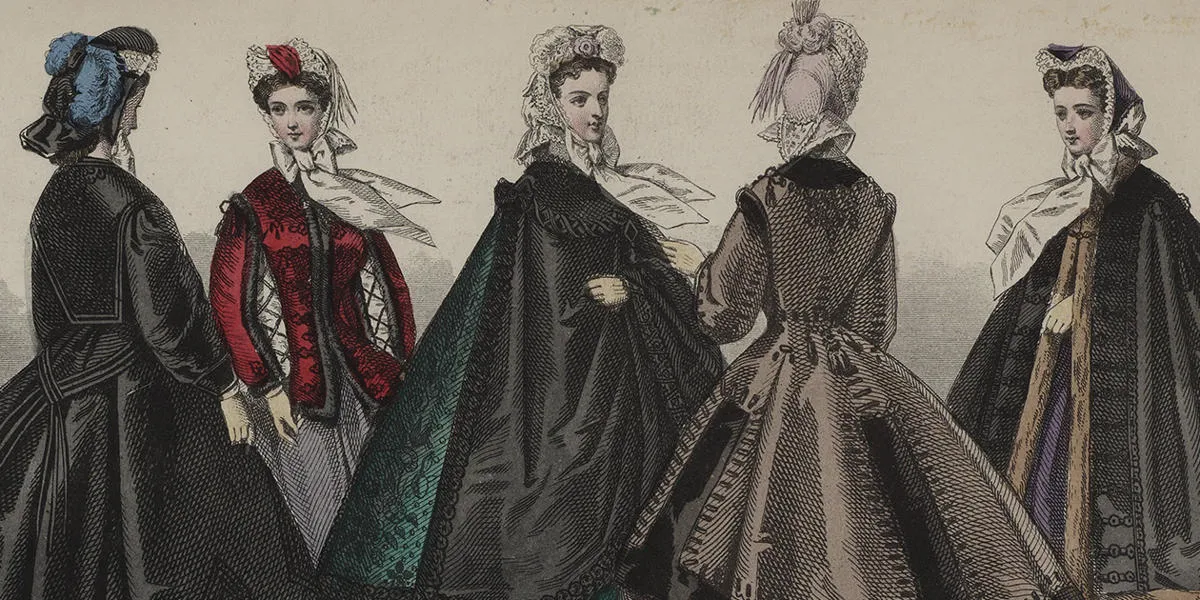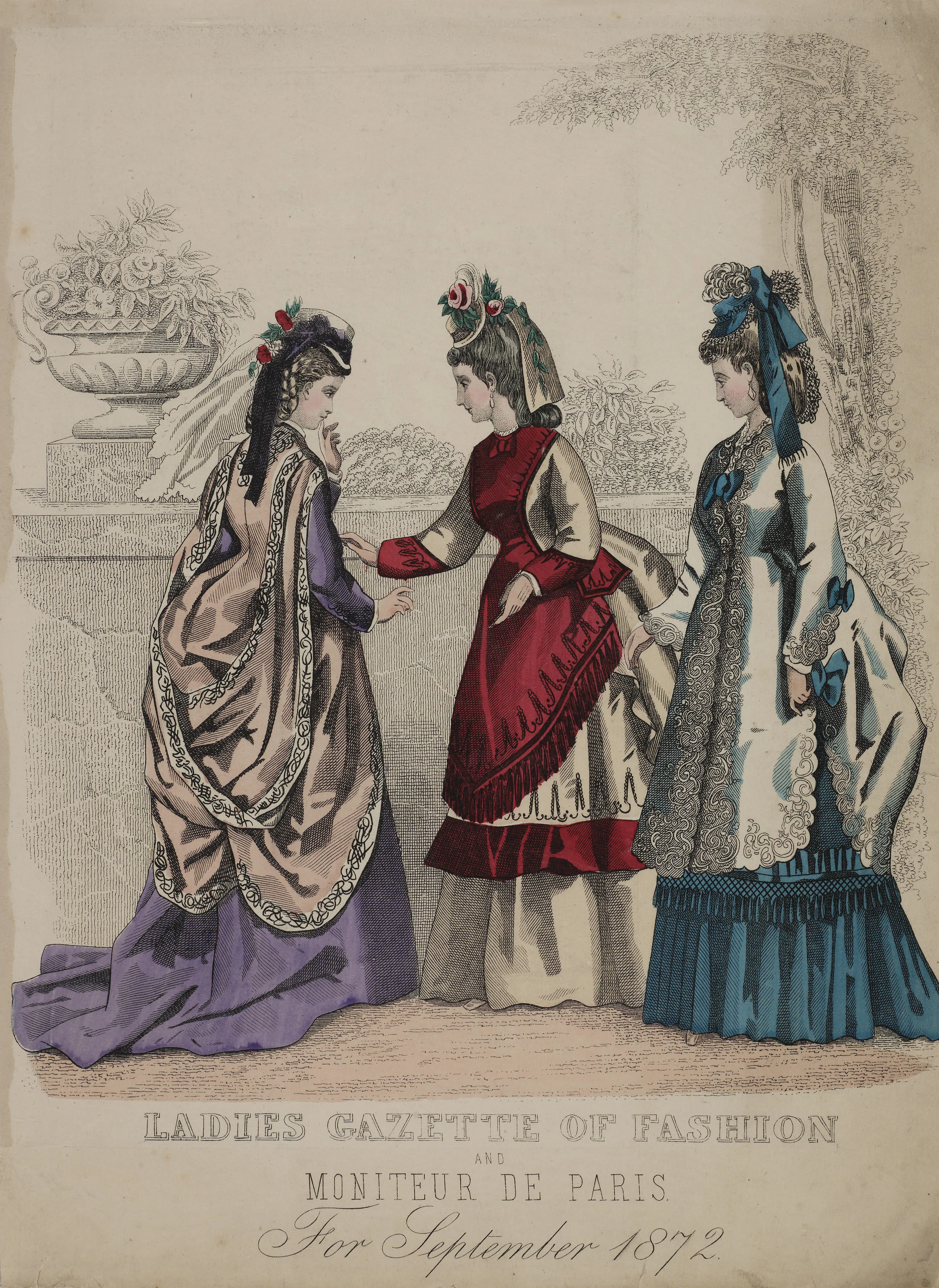Victorian Fashion Prints

In our collections we have a set of prints from the 1860s that showcase the fashion of the era. A selection can be viewed on a touchscreen within the exhibition and in addition on the London Picture Archive.
Victorian Fashion Prints
During the Victorian period, fashion plates from magazines such as the Englishwoman's Domestic Magazine (1852-1879), informed the style of fashionably dressed London ladies. This magazine was founded by Samuel Beeton whose famous wife, Isabella Mary, was known for Mrs Beeton’s Book of Household Management (also published as Mrs Beeton’s Cookery Book).

Coloured fashion plates were imported from Paris and inserted into the magazines. On the bottom right of the plate you will see confirmation of its Parisian origin. The plates were hand-coloured until advances in print technology in the form of chromolithography took over, this made it cheaper to produce items on a large scale.
There were different standards of social etiquette with more fancy gloves, hats and parasols required for an outing of the middle classes. The crinoline made an appearance after 1856, widening the female silhouette with its cage. Until the arrival of the sewing machine in the 1850s there were few ready-made clothes available, and most garments would have been tailor-made.
The colour mauve in these prints had recently been patented in 1856 by William Henry Perkin, in a house near Cable Street, (3 King David Lane) Shadwell, Stepney. Other synthetic dyes were also starting to be produced in strong greens, blues and oranges.


The 1860s crinoline became gradually more elaborate in their decoration with ribbons and contrasting trimming in lace. Jayne Shrimpton describes this need for extravagance:
…a trend often explained by the growing wealth of the rising middle classes, increased consumer demand and desire for novelty and conspicuous display.

In the early 1870s the crinoline was superseded by the bustle which accentuated the upper part of the skirt in the back. This gave a stricter outline to the silhouette.

The Industry of Fashion
Producing clothing during the 1860s took place across various districts in London including small workshops and working from home:
In Marylebone and Westminster, dressmakers and bespoke tailors sewed high quality goods for the rich; skilled leather workers, straw plaiters and felters constructed shoes and hats in Bermondsey, Hackney and Southwark; silk weavers still operated their looms in Bethnal Green and Whitechapel – though trimmings such as ribbons had largely superseded the flowered dress and waistcoat silks of the previous century; while in the neighbouring Stepney and Bow the sweated labour of women, children and recent immigrants (paid by the piece rather than by the hour) produced cheap ready-made garments for working-class consumers.
Further reading
You can read more on the history of fashion plates in: Fashion through Fashion Plates 1771-1970 by Doris Langley Moore (Ward Lock, 1971). [Barbican Library Reference Q 391.00942 MOO]
Explore the Lost Victorian CitySearch the London Picture Archive